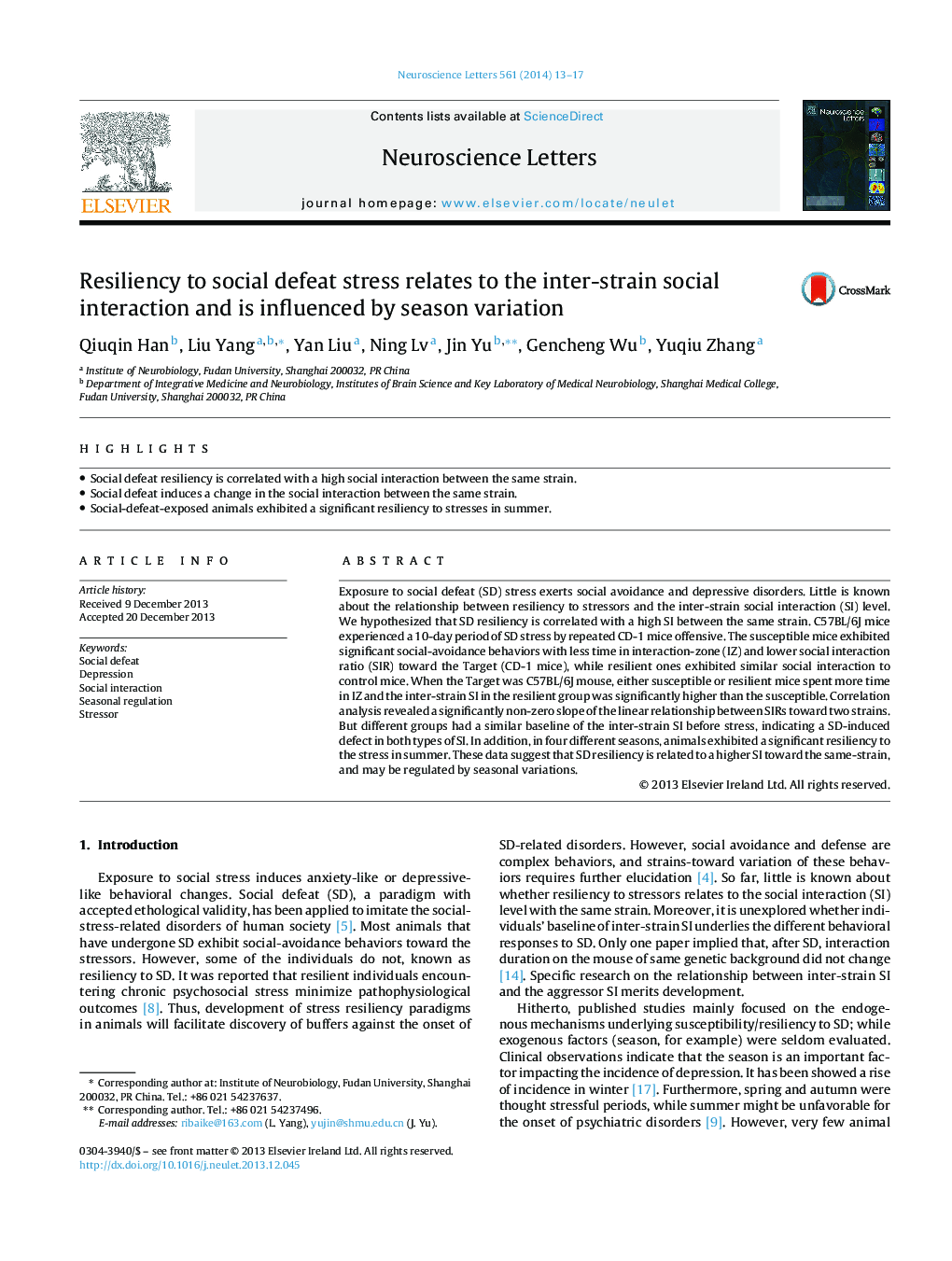| Article ID | Journal | Published Year | Pages | File Type |
|---|---|---|---|---|
| 4343840 | Neuroscience Letters | 2014 | 5 Pages |
Abstract
Exposure to social defeat (SD) stress exerts social avoidance and depressive disorders. Little is known about the relationship between resiliency to stressors and the inter-strain social interaction (SI) level. We hypothesized that SD resiliency is correlated with a high SI between the same strain. C57BL/6J mice experienced a 10-day period of SD stress by repeated CD-1 mice offensive. The susceptible mice exhibited significant social-avoidance behaviors with less time in interaction-zone (IZ) and lower social interaction ratio (SIR) toward the Target (CD-1 mice), while resilient ones exhibited similar social interaction to control mice. When the Target was C57BL/6J mouse, either susceptible or resilient mice spent more time in IZ and the inter-strain SI in the resilient group was significantly higher than the susceptible. Correlation analysis revealed a significantly non-zero slope of the linear relationship between SIRs toward two strains. But different groups had a similar baseline of the inter-strain SI before stress, indicating a SD-induced defect in both types of SI. In addition, in four different seasons, animals exhibited a significant resiliency to the stress in summer. These data suggest that SD resiliency is related to a higher SI toward the same-strain, and may be regulated by seasonal variations.
Related Topics
Life Sciences
Neuroscience
Neuroscience (General)
Authors
Qiuqin Han, Liu Yang, Yan Liu, Ning Lv, Jin Yu, Gencheng Wu, Yuqiu Zhang,
